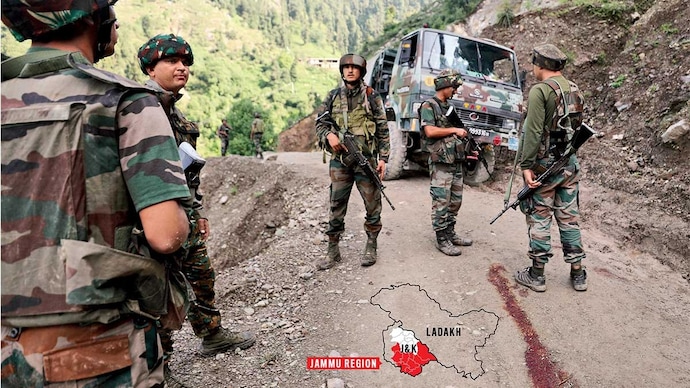On August 05, 2019 after India had abrogated Article 370 & 35A in Jammu & Kashmir, two countries did not take it lying down and as time would reveal these two countries – China & Pakistan clearly irked by India’s move, would step up pressure on India in due course.
As India lay basking in the abrogation of two contentious articles of its Constitution that were for long perceived as the biggest hinderance in the growth and security of Jammu & Kashmir by an overwhelming majority of Indian citizens, four days later on August 09, 2019 Shah Mehmood Qureshi, the Minister of Foreign Affairs of Pakistan dashed in a sudden two-day visit to China.
In back-to-back meetings with the top Chinese leadership spread over two days on August 09-10, 2019, Pakistan’s Foreign Minister and China decided that a strong response would be given to India’s move of abrogation of the two articles.
Pakistan eventually tasked its terrorists operating in Jammu & Kashmir since 1989 when terrorism broke out in India’s northern most state (now a Union Territory), and had been largely confined to the North of Pir Panjal Range (NPPR) which includes the Kashmir Valley, to shift their operations to the South of Pir Panjal Range (SPPR) which includes Jammu region.
But this wasn’t as easy as it seemed due to the heavy deployment of the Indian security forces on both the sides of the Pir Panjal Range, the mountainous range that roughly separates the Kashmir Valley from the Jammu region.
It was here that China came to the aid of its all-weather ally, Pakistan whom Xi Jinping, the President of China has described in an op-ed he had authored in Pakistan’s Daily Times before his first state visit to Pakistan on April 20, 2015 in which he had written that “I feel as if I am going to visit the home of my own Brother” and also wrote that “the friendship between the two nations was higher than mountains, deeper than oceans and sweeter than honey”.
Now, was the litmus test of China to show Pakistan that it meant each word that Xi Jinping had written in his op-ed of April 2015.
Just as all seemed well between China and India on the face of it, orders were given by the Central Military Commission (CMC) to the People’s Liberation Army (PLA) to plan an incursion in eastern Ladakh of India.
In early-April 2020, the PLA started intruding in eastern Ladakh and the stand-off began between the PLA and the Indian Army that lasted over four years and included the bloody Galwan Valley Clash of June 15, 2020 which saw 20 soldiers of the Indian Army killed in action.
This resulted in the Indian Army redeploying its troops and about two divisions were moved from the Jammu region to eastern Ladakh to be deployed on the Line of Actual Control (LAC) opposite China.

This was exactly what Pakistan needed. With a thinner Indian security forces deployment in the Jammu region, Pakistan stepped up terrorism in the Jammu region on the SPPR since early-2024. The relatively quiet Jammu region has become as volatile as the Kashmir Valley.
Just as a thaw between India and China on the LAC in eastern Ladakh seemed impossible, in a surprise and unexpected announcement, Vikram Misri, the Indian Foreign Secretary on October 21, 2024 announced disengagement in eastern Ladakh where about 50,000 troops of the PLA and Indian Army were deployed in eyeball-to-eyeball contact since 2020.
The Indian mainstream electronic media went gung-ho over this announcement. However, this is only a lull before a storm.
According to the 2024 Annual Threat Assessment released on February 05, 2024 by the Director of National Intelligence, USA, since the relations of India with both China and Pakistan are fragile, it is likely to result in a war between these three nations.
And all timelines are pointing to 2035 when China and Pakistan will jointly wage a two-front war on India in which Pakistan will attack India for Jammu & Kashmir and China will attack India for Arunachal Pradesh.
With China aiming for a 1500-nuclear weapon strong arsenal by 2035, the infrastructure development in Xinjiang and Tibet to be completed by 2032, the construction of two aircraft carriers, 21 nuclear submarines and 200 warships slated to be completed by 2030 and the modernisation of the PLA to be completed by 2027, China is in full force and fury to increase its military might.
China is ahead of India by three decades in military preparedness and with the addition of Pakistan which too has a professional military, the balance of military preparedness tilts heavily in favour of the China and Pakistan combine.
Clearly, there is no time to rejoice in India over the disengagement with China. With just over a decade left for the two-front war which is now visible on the horizon, it is time for India for greater vigil and military preparedness.
About the Writer
Lt Col JS Sodhi (Retd) is the Editor, Global Strategic & Defence News and the author of “China’s War Clouds: The Great Chinese Checkmate”.